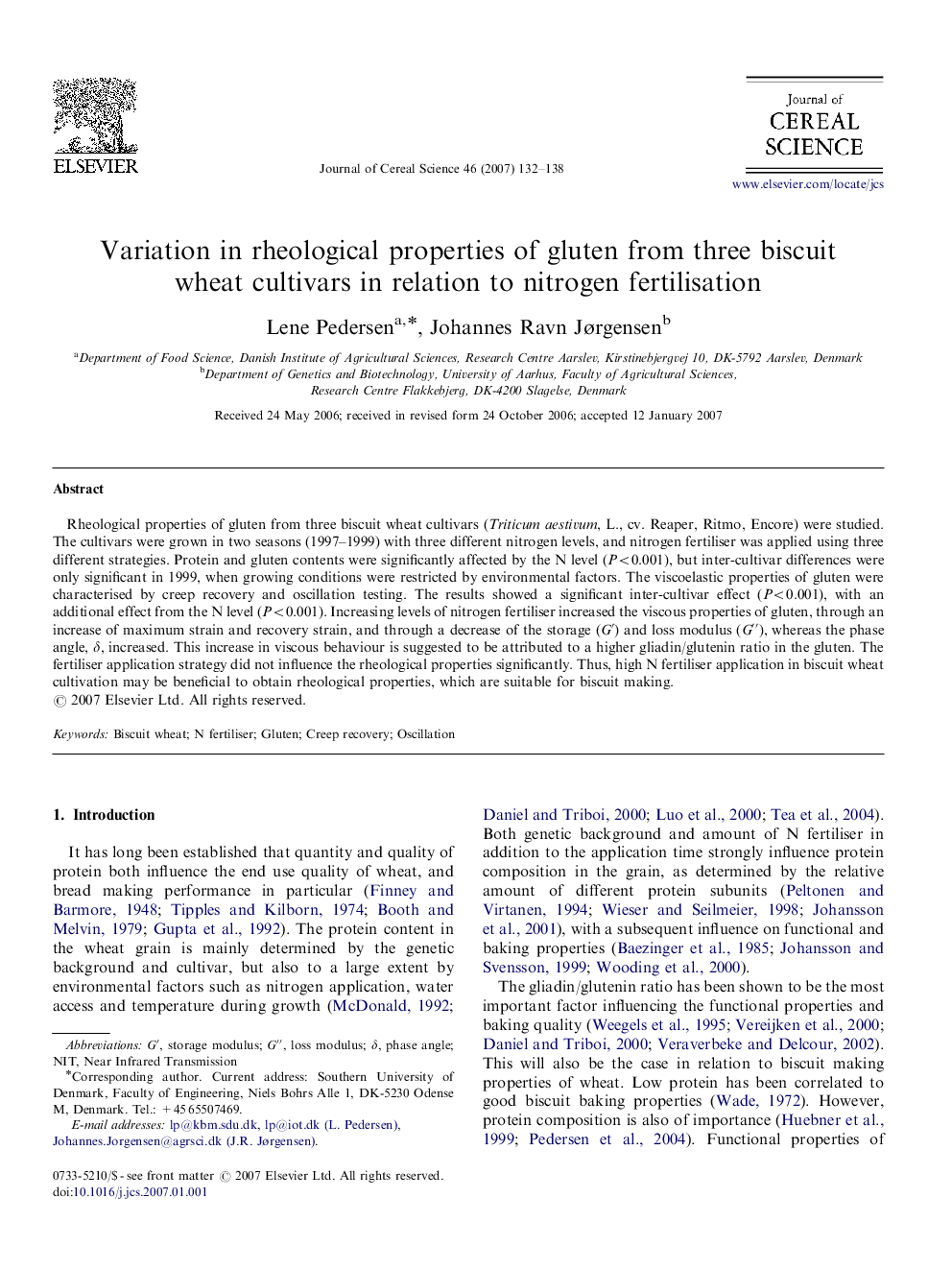| Article ID | Journal | Published Year | Pages | File Type |
|---|---|---|---|---|
| 4516845 | Journal of Cereal Science | 2007 | 7 Pages |
Rheological properties of gluten from three biscuit wheat cultivars (Triticum aestivum, L., cv. Reaper, Ritmo, Encore) were studied. The cultivars were grown in two seasons (1997–1999) with three different nitrogen levels, and nitrogen fertiliser was applied using three different strategies. Protein and gluten contents were significantly affected by the N level (P<0.001), but inter-cultivar differences were only significant in 1999, when growing conditions were restricted by environmental factors. The viscoelastic properties of gluten were characterised by creep recovery and oscillation testing. The results showed a significant inter-cultivar effect (P<0.001), with an additional effect from the N level (P<0.001). Increasing levels of nitrogen fertiliser increased the viscous properties of gluten, through an increase of maximum strain and recovery strain, and through a decrease of the storage (G′) and loss modulus (G′′), whereas the phase angle, δ, increased. This increase in viscous behaviour is suggested to be attributed to a higher gliadin/glutenin ratio in the gluten. The fertiliser application strategy did not influence the rheological properties significantly. Thus, high N fertiliser application in biscuit wheat cultivation may be beneficial to obtain rheological properties, which are suitable for biscuit making.
